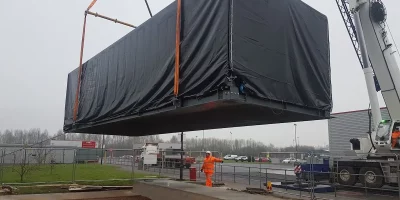In today’s digital age, data centres have become the backbone of businesses, both large and small. As the volume of data continues to grow exponentially, the need for dedicated data centre facilities has never been more critical. While some companies opt for colocation solutions, hidden costs can make it a counterintuitive investment. Data centre construction may not have changed much since the early days of massive server farms, but their role has evolved significantly.
In this comprehensive guide, we will take you through the essential steps and considerations involved in data centre construction, from the initial assessment to the final construction phase.
Section 1: Assessment
Determining Computing Requirements
Before starting construction, it’s crucial to assess your business’s computing needs. Start by answering the question: “How many servers would cover your computing requirements?” This assessment will determine the number of servers necessary to host your data. It’s also essential to ensure that your planned data centre facility is spacious enough to accommodate your equipment comfortably.
Planning for Future Expansion
Businesses are always evolving, and technology is continually advancing. To future-proof your data centre, consider whether you’ll need to expand in the future. Adding extra space during the initial construction phase is more cost-effective than retrofitting later on. For instance, with the advent of technologies like 5G, many companies had to upscale to keep pace.
Evaluating Data Security Needs
Data security is paramount, especially if your business deals with sensitive information. Assess your data security needs by determining whether your IT requirements include HIPAA protection or other measures. Tailoring your design to meet these needs will safeguard your data from cyber threats.
Understanding Construction Costs
When it comes to data centre construction in the UK, it’s essential to have a clear grasp of the associated expenses. While data centres typically cost between £225 to £375 per square meter, several factors influence the final price. Consider variables such as snow and wind loads, the type of insulated panels used, roof specifications, and structural requirements. To obtain a precise estimate, contact our experienced team who can provide you with a detailed job quote tailored to the UK market.
Section 2: Planning
Site Selection
Selecting the right location is a critical first step. Your chosen site must offer reliable access to water and power supplies to support data centre operations. Consider factors like topography, natural disaster risks, and the availability of fibre connectivity. Striking a balance between security (away from cities) and accessibility is essential. It’s wise to identify multiple suitable locations and revisit your choice after the design process.
Researching Permits and Deadlines
Researching and understanding the permits required and associated deadlines is crucial for a smooth construction process. Compliance with local regulations and deadlines is essential to avoid costly delays.
Section 3: Design
Mapping Out Floor Space
Creating a scalable floor plan is essential. Determine the building’s dimensions, the number of floors, and room sizes. Ensure your floor plan allows for future expansion. Consider the layout of electronic cabinets, servers, racks, and cable management. The design should prioritise functionality and ease of navigation for personnel.
Designing the Power System
A robust power system is fundamental to a data centre’s operation. Aim for a Power Usage Effectiveness (PUE) level below two. Assess power needs, explore alternative energy sources, and install backup power systems. Redundancy is key to ensuring uninterrupted power supply.
Implementing Cooling Systems
Efficient climate control is vital for data centres. Explore redundant cooling systems and consider the benefits of water cooling versus air conditioning units. Optimise airflow design to reduce cooling costs. Understand that slightly higher temperatures can be acceptable if managed correctly.
Ensuring Security
Data centre security encompasses physical and network aspects. Invest in cameras, secure entrances, and fire protection. For network security, deploy firewalls, secure ACLs, IDSs, and regular data encryption.
Building Management System (BMS)
Consider implementing a BMS to monitor and manage data centre conditions. A BMS can automatically rectify issues, enhancing efficiency and safety.
Section 4: Construction
Selecting a Construction Company
Choose a reputable construction company with strong communication and project management skills. They will ensure your data centre construction stays on track and keep you informed about its progress.
Choosing Building Materials
Decide between concrete and steel construction based on your specific needs. Consider factors like fire resistance, transportability, and sustainability. Using recycled and eco-friendly materials is encouraged to align with green data centre initiatives.
Conclusion
In conclusion, constructing a data centre is a multifaceted project that requires careful planning and execution. A well-designed data centre not only protects your company’s data but also ensures efficiency and sustainability. While it may be a complex undertaking, following the steps and considerations outlined in this guide will set you on the path to building a secure, energy-efficient data centre that meets your business needs and prepares you for the future.
Want to build a data centre in the UK? Contact us today for a construction quote!






